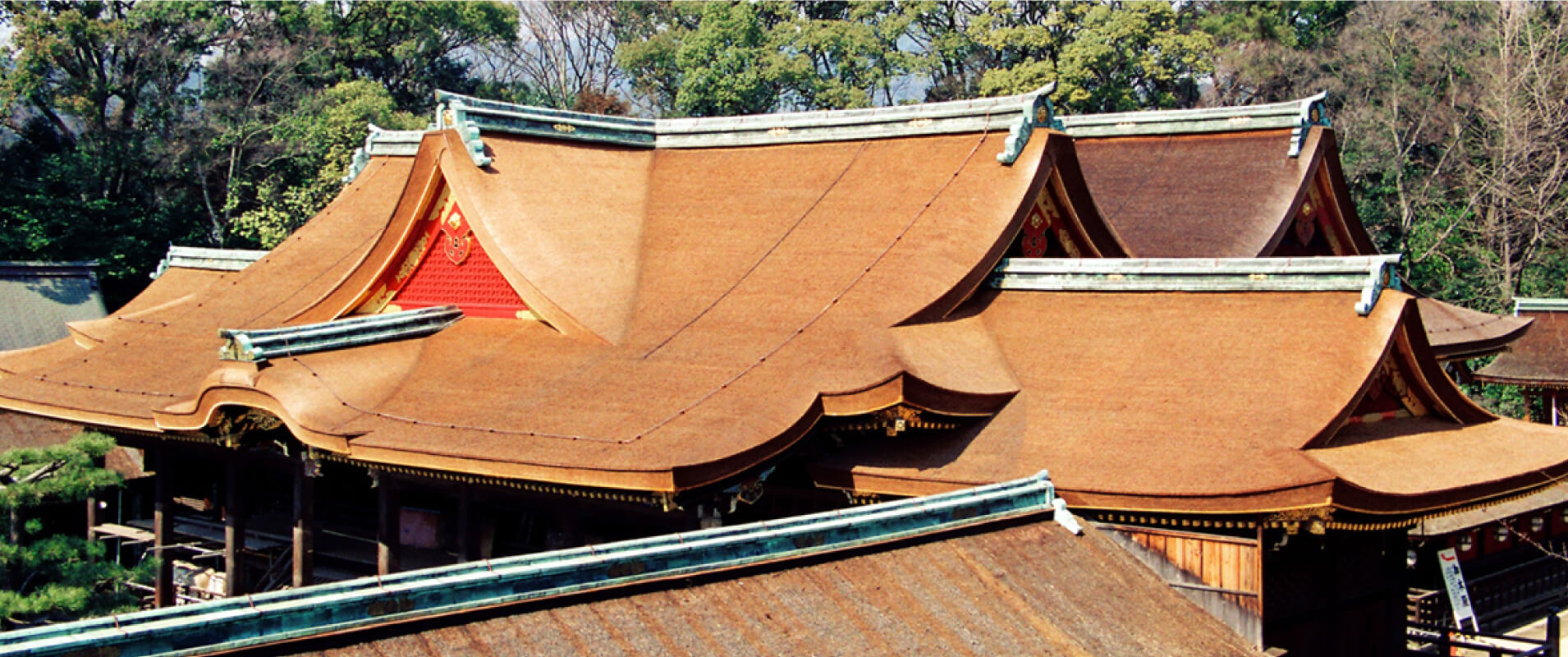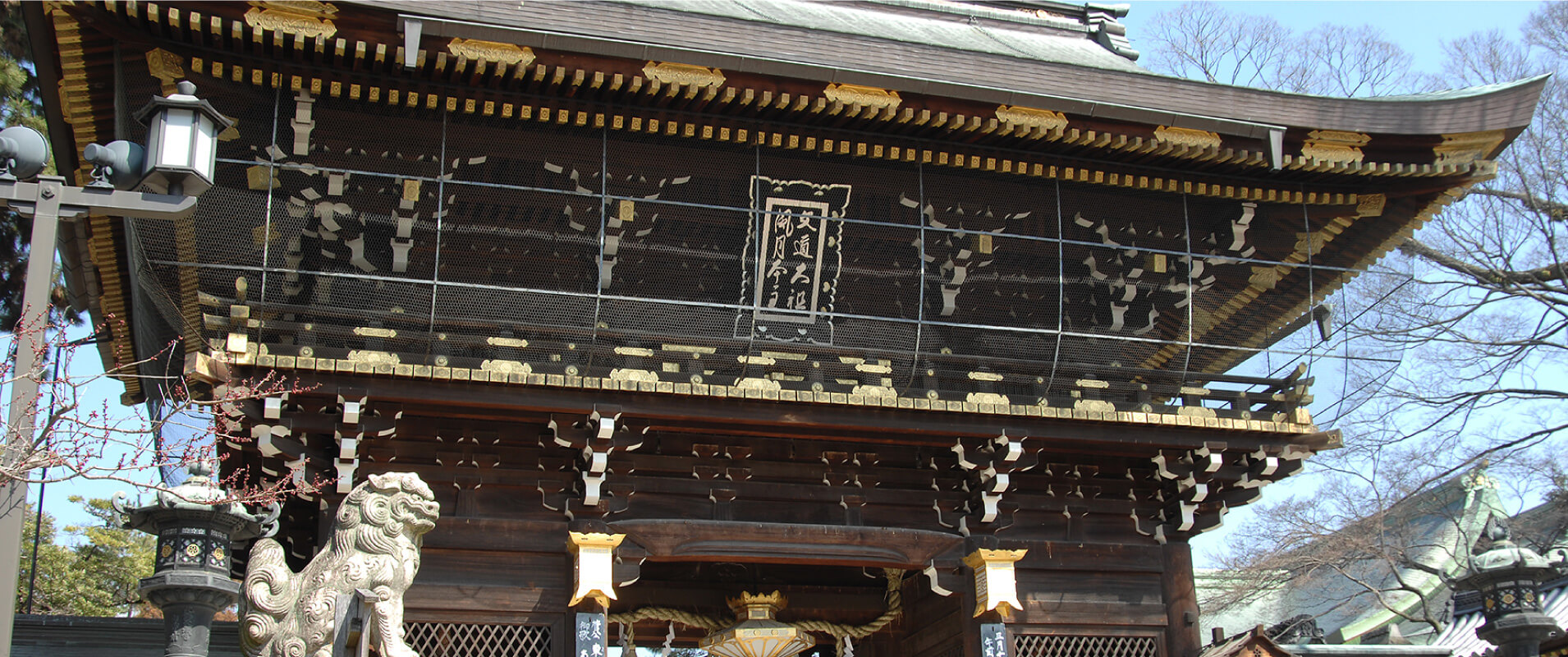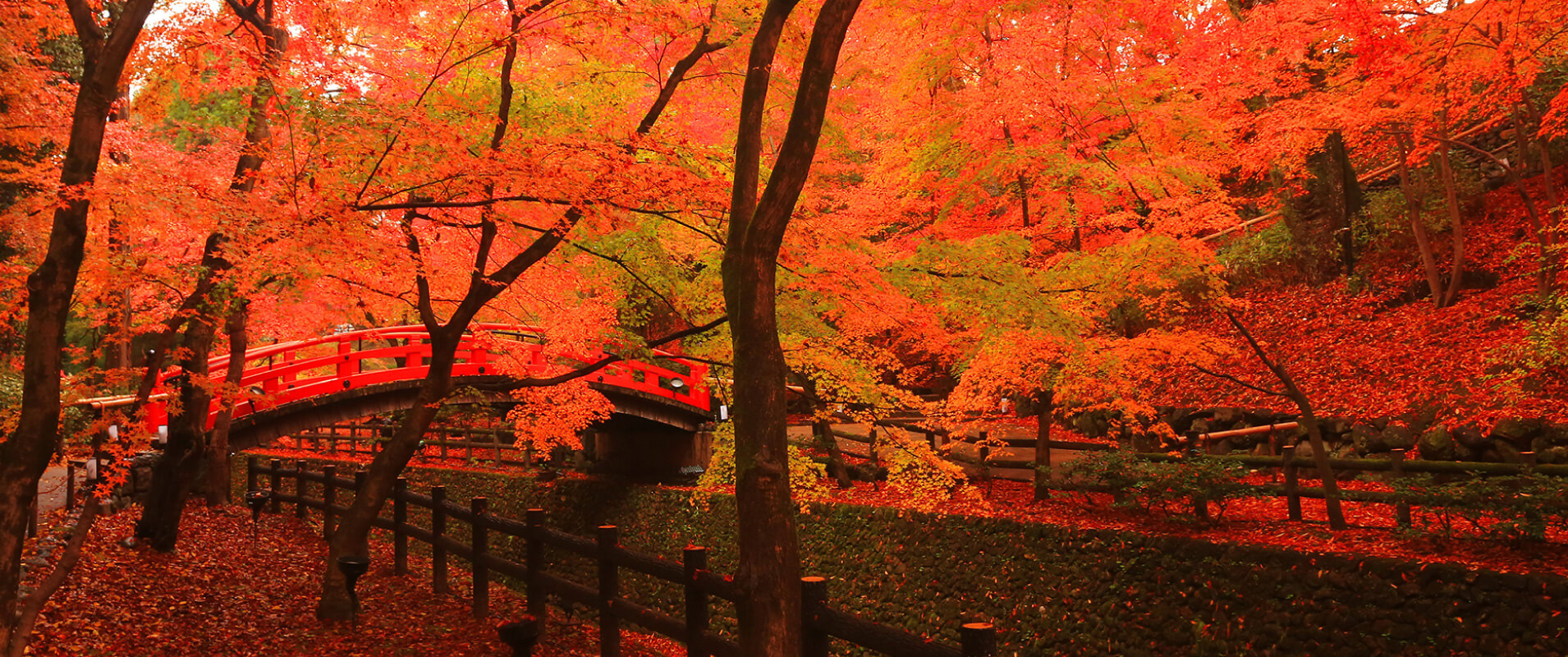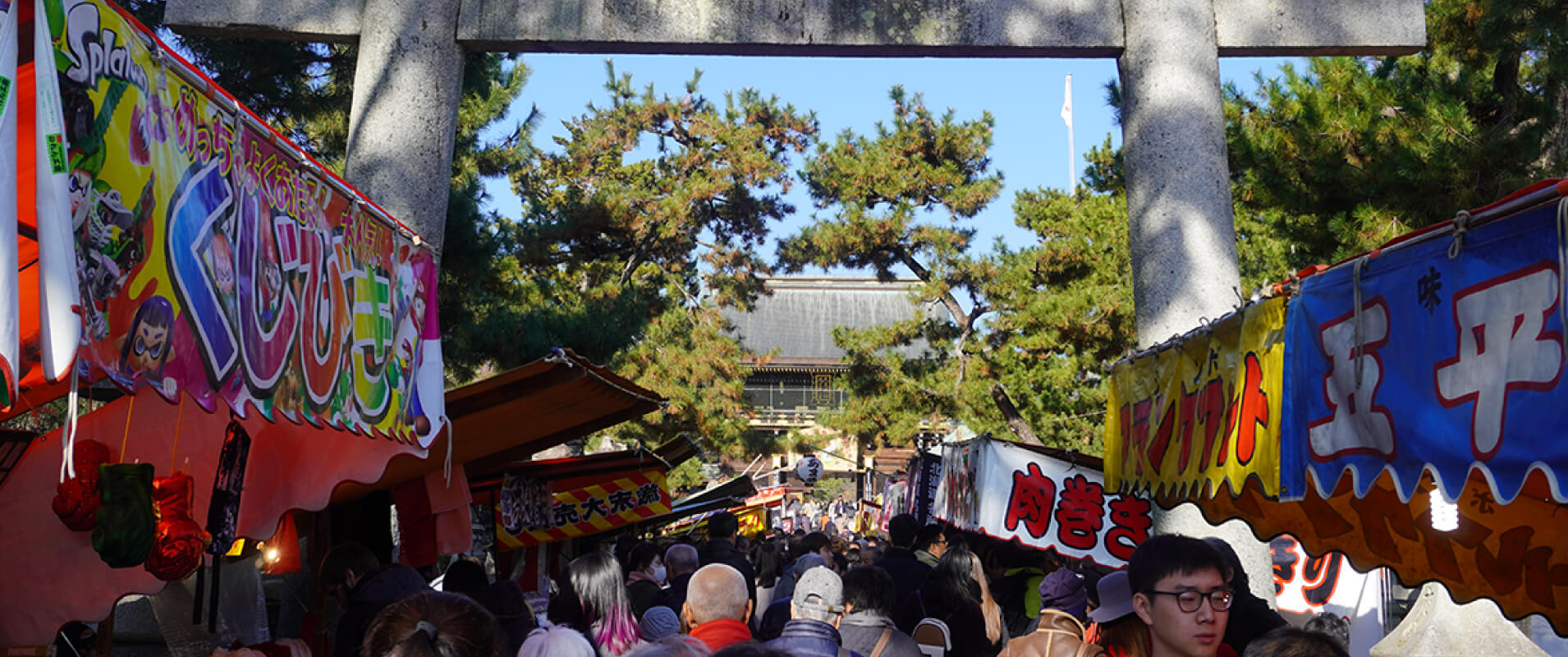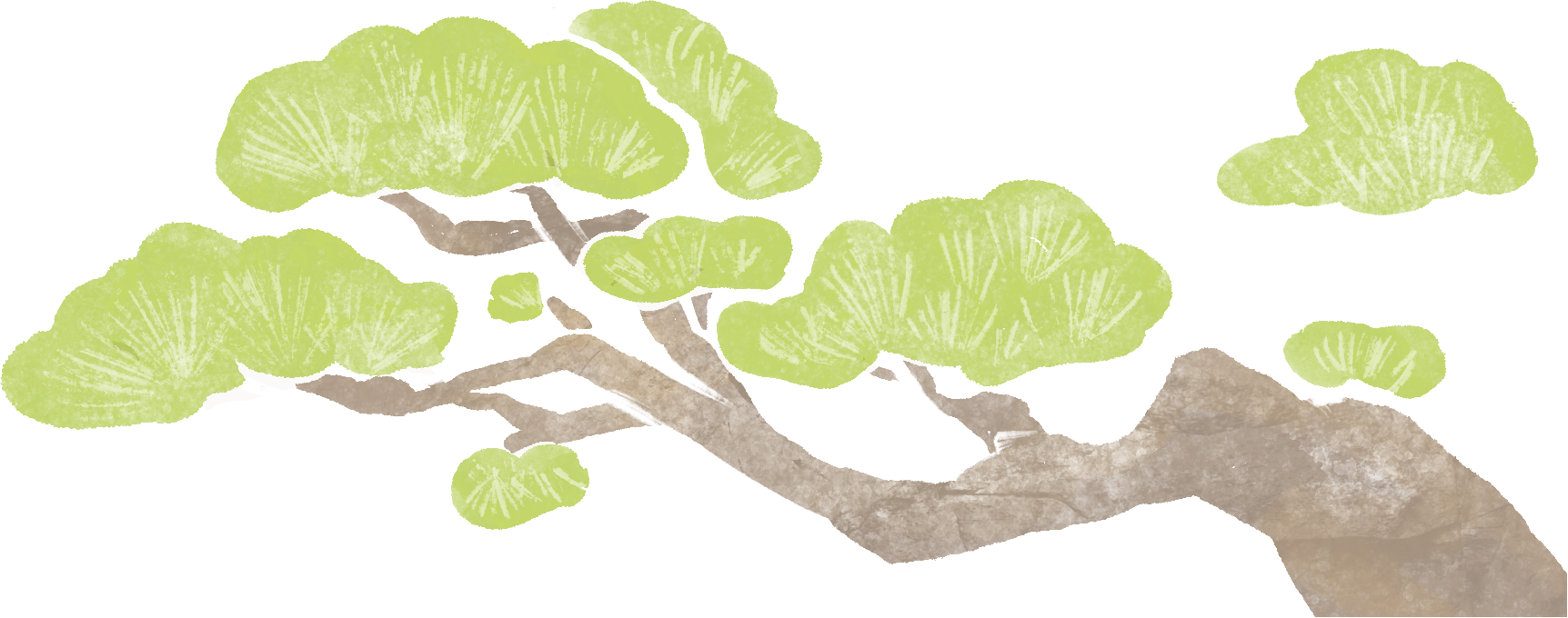About the Kitano Tenmangu Shrine
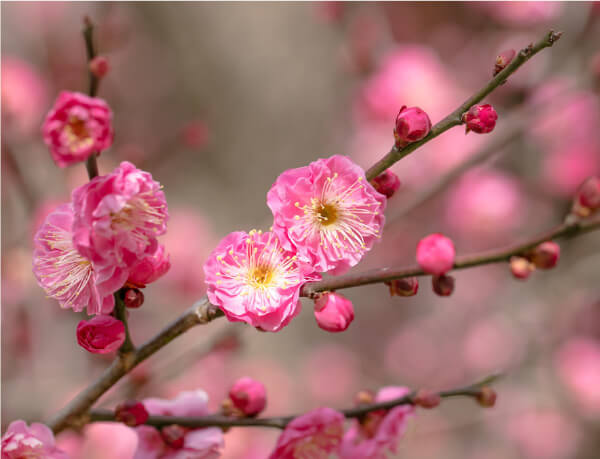
Plum blossom garden
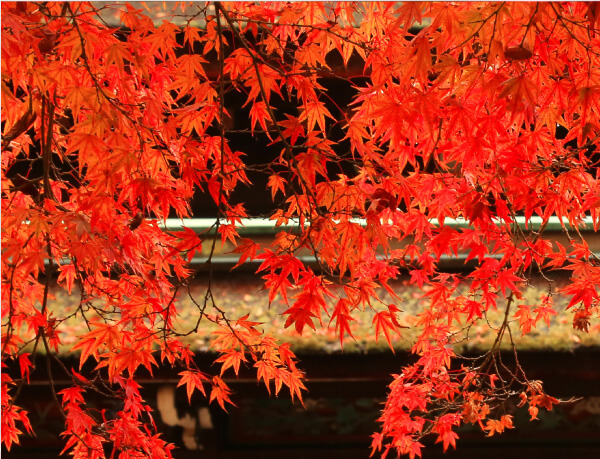
Maple garden
(Odoi historic landmark)
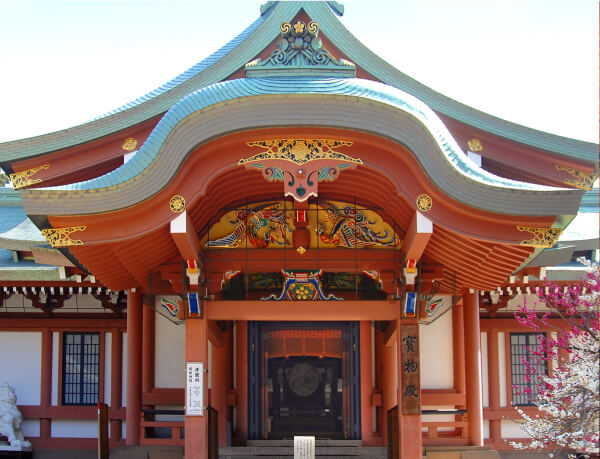
Shrine Museum
The Kitano Tenmangu Shrine is a shrine built in the northwest section of Kyoto over 1000 years ago. The shrine was built during 947AD by the emperor of the time in honor of Sugawara no Michizane, a scholar and politician who represented the middle Heian period (794 AD – 1185 AD), as well as for the peace of the nation. Ever since, the imperial family, nobles, samurais and commoners alike all visit the shrine to worship.
The Kitano Tenmangu Shrine is the very first shrine in Japanese history where an actual person was enshrined as a deity. He is known as the “god of agriculture,” “god of honesty and sincerity,” “god of dispelling false accusations” and “god of performing arts.” However, he is best known for being the “god of academics.” Sugawara no Michizane is a historical figure who read poems at the age of five and wrote Chinese poems at the age of 11. His superior talent is what led to the dissemination of the “Tenjin faith” throughout Japan. There are as many as 12,000 shrines that are dedicated to Sugawara no Michizane in Japan, but the Kitano Tenmangu Shrine is the origin and the main shrine. To this day, many students that pray for passing scores on examinations and persons who wish for the improvement of their abilities come here to visit.
Highlights
The main shrine, where the deity is enshrined, is positioned behind the worship hall, which is connected by the “Ishi-no-Ma Hall.” The main shrine, worship hall and the Ishi-no-Ma Hall have roofs above them, and by combining them all, create a large, elegant roof. This unique construction method, due to having numerous buildings, is called a “yatsumune-zukuri” (multi-building construction). The current shrine was constructed by Toyotomi Hideyori during the twelfth year of the Keicho era (1607 AD) and is designated as a national treasure.
The main shrine, Ro-mon Gate and Sanko-mon Gate were all built at the same time. They all have golden decorations, finely-detailed sculpting and vivid colors, fitting for the unique design of the Momoyama period (1573 AD – 1603 AD).
The vast shrine grounds have many more things to see. It is known as one of the nation’s best places to view ume trees. When the flowers bloom, the Bai-en (ume garden) is open to the public. The ume blossom festival on February 25 has a tea ceremony where the geiko and maiko of Kamishichiken come to serve matcha and sweets. During the season of the red maple trees, there is the Momiji-en (autumn maple garden) where one can see 350 maple trees. Remnants of the “Odoi,” an earthen mount of fortification built by Toyotomi Hideyoshi encircling Kyoto, can be seen here as well. They are designated as national historical sites and these historic remains have fused with the natural surroundings and have become a scenic view with an atmosphere unique to Japan. Also, having its roots on the anniversary of the birth and death of Sugawara no Michizane, on the 25th of each month, there is a street market called “Tenjin-san’s Festival” that is held within the shrine grounds as well as in the outer areas. You can purchase food, sundries, used clothes and used tools at the stalls here. The market is bustling from early morning at 6 AM to sunset, with many visitors.
Houmotsuden (Shrine Museum)
Since its founding over a thousand years ago, the imperial family as well as court nobles, samurai and merchants have worshipped here. There are many treasures that were offered and have been stored here since. Among many of its kind is the “Illustrated Scroll of the Origin of Kitano Tenjin,” which is said to be the source. Out of the picture scrolls, it is especially excellent and is designated a national treasure due to its historical value. There are also historical documents, swords, gold lacquer, folding screens, tea ceremony tools and many other craftworks of high artistic value stored here.
Open hour
Admission fee
9:00-16:00 on25th of every month
Adults 1,000 yen
Senior and Junior highschool students 500 yen
Elementary school students and schooltrip students 250 yen
*Preschool children are free
Collection
Prayer
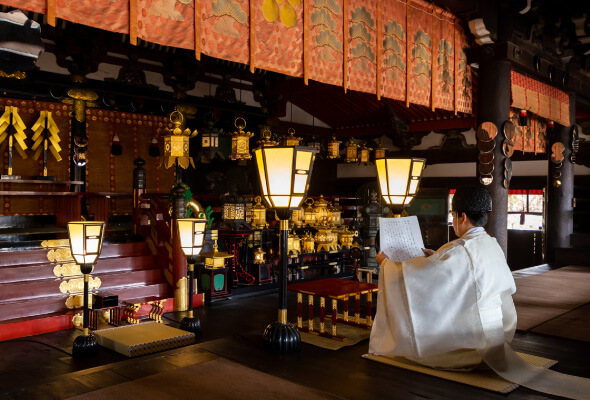
Regular visitors may walk freely outside the building. However, visitors who have applied for charms to avert calamity or for prayer for excelling in academics may enter inside the main building. Prayers, offered to traditional Japanese gods, are conducted according to traditional customs.
Etiquette during visit
Visiting shrines originally was done with prayer to the gods in appreciation for their daily lives and also asking to be protected in the future. Each custom that is formulated through our long history has meaning. Please enjoy your visit to the shrine while following the proper etiquette.
Before visiting, “Customs on Hand Washing”
Hand washing has its roots in the “Misogi” (purification) rituals. Sins and taints that have accumulated on the person without their knowledge were purified through dipping into the rivers or ocean. The custom gradually shifted to rinsing one’s hands and mouth. After passing through the Ro-mon Gate, you will see the Chozuya, a site for the ritual cleansing of your hands, to your right.
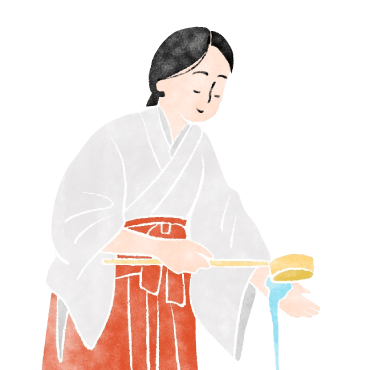
Hold the ladle in your right hand, fill it with water, and wash your left hand with it.
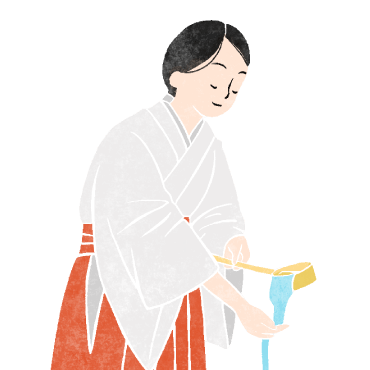
Then switch the ladle to your left hand, and wash your right hand.
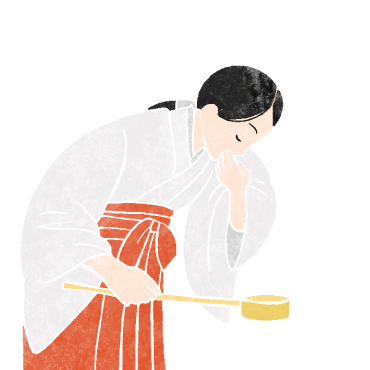
Hold the ladle on your right hand again, and pour some water into your left hand to rinse your mouth. At this time, do not put your lips directly onto the ladle and do not drink the water.
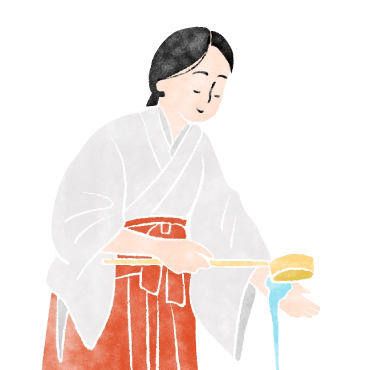
Wash your left hand one more time.
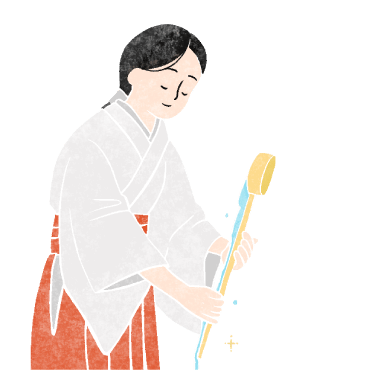
Hold the ladle vertically to wash the handle with the remaining water.
Basics of Visiting
“Bow Twice, Clap Twice, Bow Once”
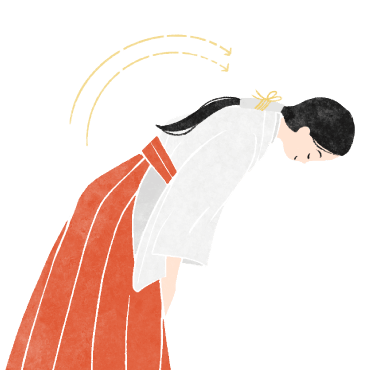
Bow deeply twice.
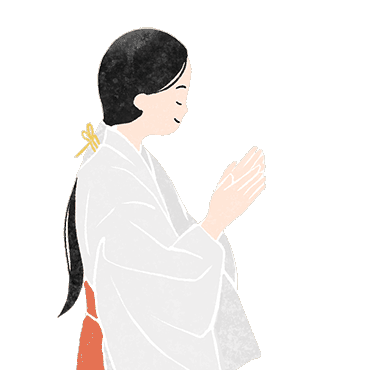
Place both hands near your heart and clap twice.
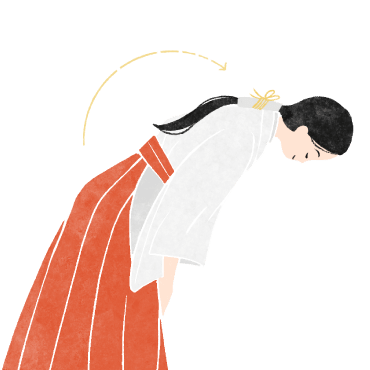
Bow deeply once more.
Visitor Guide
Visiting shrines originally was done with prayer to the gods in appreciation for their daily lives and also asking to be protected in the future. Each custom that is formulated through our long history has meaning. Please enjoy your visit to the shrine while following the proper etiquette.
開門時間
7時〜17時
